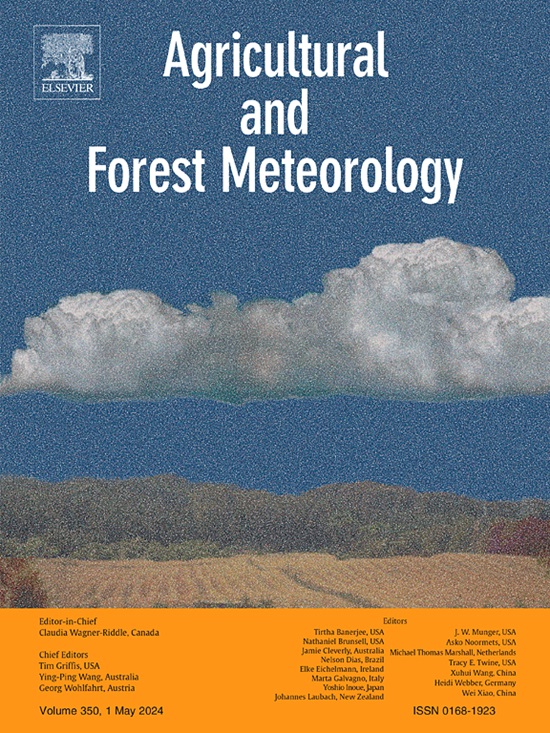Spring frost risk assessment on winter wheat in South Korea
IF 5.6
1区 农林科学
Q1 AGRONOMY
引用次数: 0
Abstract
Spring frost remains a major climatic risk for winter wheat production. However, frost risk is often overlooked in climate change studies, especially those that rely on process-based crop models. This study assesses the spring frost risk for winter wheat in South Korea using observed trial data, a process-based crop model, and a large ensemble of climate data. Trial data from seven sites across South Korea suggest that the extreme yield loss in the 2019/20 season resulted from a combination of a warm winter, which accelerated phenology, and a cool April, which led to several frost events around heading. Projections with a calibrated DSSAT-Nwheat model and a large ensemble of climate data (HAPPI) suggest that the risk of yield loss due to spring frost will increase in the southern region of South Korea. However, this risk can be reduced by switching to later-maturing cultivars to avoid spring frost. In contrast, while the risk of yield loss due to spring frost in the central and northern regions is not expected to increase significantly, it will persist and can only be reduced by introducing frost-tolerant cultivars. Extending this analysis to include losses from other major stressors and linking it to socio-economic analyses will be needed for developing long-term strategies to boost wheat production, enhance self-sufficiency, and ensure food security.
求助全文
约1分钟内获得全文
求助全文
来源期刊
CiteScore
10.30
自引率
9.70%
发文量
415
审稿时长
69 days
期刊介绍:
Agricultural and Forest Meteorology is an international journal for the publication of original articles and reviews on the inter-relationship between meteorology, agriculture, forestry, and natural ecosystems. Emphasis is on basic and applied scientific research relevant to practical problems in the field of plant and soil sciences, ecology and biogeochemistry as affected by weather as well as climate variability and change. Theoretical models should be tested against experimental data. Articles must appeal to an international audience. Special issues devoted to single topics are also published.
Typical topics include canopy micrometeorology (e.g. canopy radiation transfer, turbulence near the ground, evapotranspiration, energy balance, fluxes of trace gases), micrometeorological instrumentation (e.g., sensors for trace gases, flux measurement instruments, radiation measurement techniques), aerobiology (e.g. the dispersion of pollen, spores, insects and pesticides), biometeorology (e.g. the effect of weather and climate on plant distribution, crop yield, water-use efficiency, and plant phenology), forest-fire/weather interactions, and feedbacks from vegetation to weather and the climate system.

 求助内容:
求助内容: 应助结果提醒方式:
应助结果提醒方式:


